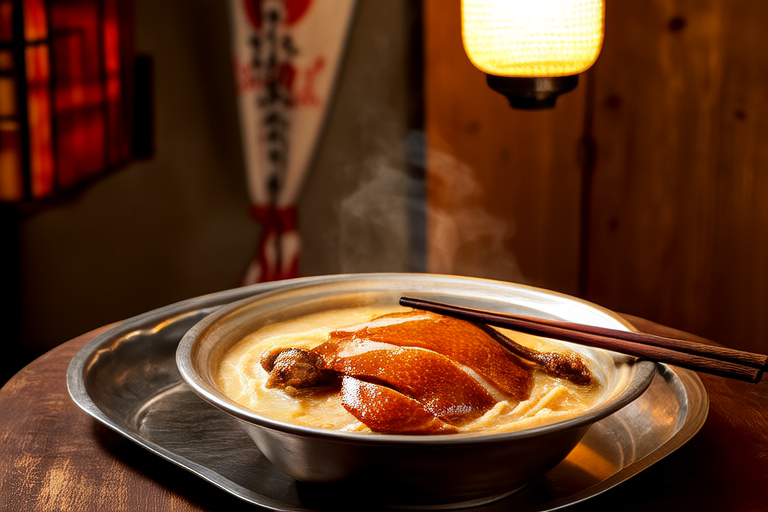Global Palate Passport: Savoring Local Specialties Around the Globe

Global Palate Passport: Savoring Local Specialties Around the Globe
Introduction
The concept of a “Global Palate Passport” encapsulates the idea of exploring the world through its culinary traditions. Food is more than just sustenance; it is an integral part of cultural identity, reflecting history, geography, and social values. Traveling offers an unparalleled opportunity to delve into these rich culinary landscapes. By tasting local specialties, one can truly understand and appreciate the nuances of different cultures.
Embarking on this gastronomic journey is akin to collecting stamps in a passport, each dish representing a unique destination. From the delicate artistry of sushi in Japan to the robust flavors of jollof rice in Nigeria, every bite tells a story. This article invites you to savor the world’s culinary treasures, one dish at a time.
Asia
Asia, with its vast array of cultures and cuisines, offers a treasure trove of flavors. In Japan, sushi showcases the art of minimalism, where perfectly sliced raw fish is paired with vinegared rice. Ramen, on the other hand, is a hearty noodle soup with various toppings that reflect regional preferences. China presents a kaleidoscope of flavors, from the delicate dim sum, which includes steamed buns and dumplings, to the indulgent Peking duck, served with thin pancakes and hoisin sauce. India’s vibrant curries and crispy dosas are beloved globally, while Thailand’s pad thai and green curry tantalize taste buds with their balance of sweet, sour, salty, and spicy notes. Vietnam’s pho, a fragrant beef noodle soup, and banh mi, a Vietnamese sandwich, are quintessential street foods that epitomize the country’s culinary heritage.
Europe
European cuisine is renowned for its diversity and sophistication. Italy is synonymous with pasta and pizza, both prepared with regional variations that highlight the best of local produce. France offers the baguette, a symbol of French bread culture, and coq au vin, a classic dish of chicken cooked in wine. Spain’s paella, a saffron-infused rice dish, and tapas, small plates of appetizers, showcase the country’s love for communal dining. Greece’s moussaka, a layered dish of eggplant, ground meat, and béchamel, and tzatziki, a cucumber yogurt dip, are staples of Mediterranean cuisine. England’s fish and chips, a simple yet comforting combination of battered fish and fries, exemplify British culinary tradition.
Africa
African cuisine is rich in spices, grains, and vegetables, each region offering unique flavors. Morocco’s tagine, a slow-cooked stew, and couscous, a staple grain, are emblematic of the country’s culinary traditions. Ethiopia’s injera, a sourdough flatbread, and doro wat, a spicy chicken stew, reflect the country’s emphasis on communal eating. South Africa’s bobotie, a spiced minced meat dish topped with a custard, and bunny chow, a hollowed-out loaf filled with curry, are popular comfort foods. Nigeria’s jollof rice, a tomato-based rice dish, and egusi soup, made from ground melon seeds, are beloved across West Africa.
Americas
In North America, barbecue showcases regional techniques and flavors, from Kansas City’s sweet and smoky ribs to Texas-style brisket. Canada’s poutine, a dish of french fries topped with cheese curds and gravy, is a beloved indulgence. Mexico’s tacos, with their myriad fillings, represent the versatility of street food. South America boasts ceviche from Peru, a dish of marinated raw fish, and feijoada from Brazil, a hearty black bean stew. These dishes highlight the fusion of indigenous and colonial influences that shape the continent’s culinary landscape.
Australia & Oceania
Australian cuisine often features fresh seafood and native ingredients. Meat pies, a national favorite, come in various fillings, while New Zealand’s pavlova, a meringue dessert, is a must-try. The Pacific Islands offer a range of dishes, including Hawaiian poke bowls, a salad of diced raw fish, and Tahitian poisson cru, a ceviche-like dish. These flavors reflect the region’s reliance on fresh, locally sourced ingredients.
Conclusion
Our global culinary journey has taken us through Asia’s delicate sushi and fiery curries, Europe’s sophisticated pastas and rustic stews, Africa’s aromatic tagines and hearty soups, the Americas’ smoky barbecues and zesty ceviches, and Australia & Oceania’s fresh seafood and native ingredients. Each dish not only satisfies hunger but also provides a window into the culture and history of its place of origin.
Embrace local flavors to fully appreciate the diversity and richness of our world. Whether you’re savoring a bowl of pho in Hanoi or enjoying a plate of paella in Valencia, each meal is an invitation to explore and understand another culture. So, why not start your own “Global Palate Passport” adventure? Bon appétit!